Are you torn between IFTTT vs Zapier?
You’re juggling tasks, aiming for efficiency. Good news: Zapier vs IFTTT are top no-code automation tools for 2024, with free plans to boot. This article will compare their features, pricing, and use cases to guide your choice.
Read on to decide which fits your needs best.
Table of Contents
Key Takeaways
- IFTTT is good for simple tasks and personal use. It lets you connect up to 3 applets for free. For more, there’s a Pro plan at $3.49/month.
- Zapier works best for businesses with lots of app integrations. It offers a free plan with 100 tasks per month and paid plans starting at $29.99/month (billed monthly).
- If you need to do complex things like setting up workflows between apps, Zapier is better because it has over 3,000 app connections.
- For people wanting to manage smart home devices or automate social media posts easily, IFTTT is the right choice.
- Costs matter when choosing between these two. While IFTTT starts cheaper for basic needs, Zapier’s task-based pricing fits growing business demands but might cost more as those needs increase.
Overview of IFTTT vs Zapier
IFTTT vs Zapier are automation tools used to connect apps… They help you automate tasks between your favorite apps without any manual effort.
Key Features and Capabilities
IFTTT lets you connect with up to 3 applets for free, making it easy for personal automation. You can control smart home devices or post on social media without lifting a finger. For more complex needs, IFTTT Pro offers unlimited creations and faster response times at just $3.99/month.
This is great for setting up multiple steps in one go.
Zapier shines with over 3,000 app integrations, perfect for business processes. With its task-based pricing, even the free plan includes 100 tasks per month and allows creating 5 Zaps—automated workflows connecting different apps for seamless productivity boosts.
Managing projects or backing up files across platforms like Google Drive or Dropbox, Zapier makes work easier.
Save time and boost efficiency by choosing the right tool that fits your needs.
Both platforms offer user-friendly interfaces that ensure setting up automations is straightforward and customized to your specific requirements, optimizing home automation or streamlining social media management.

Integration Capabilities
Moving from what IFTTT vs Zapier can do, let’s explore how they work with other apps. IFTTT connects your smart home devices, like security systems and internet-connected light bulbs, to over 700 services including social media platforms and cloud storage services.
This means you can make all these gadgets and sites talk to each other without much hassle. For example, you could set up a recipe that posts your Instagram photos automatically to a Google Calendar event.
Zapier steps up the game with integration capabilities for more than 3,000 apps, focusing on professional tools such as project management software Asana, email service Gmail, and marketing automation tool LinkedIn.
Unlike IFTTT which gives all users access to its integrations no matter the plan, Zapier restricts some premium applications based on your subscription level. This approach makes Zapier ideal for businesses looking for expansive connectivity across numerous office tools like Office 365 or Google Workspace without worrying about missing out on linking important tools due to plan limits.
Comparison of Features
Let’s compare the features of IFTTT vs Zapier. Which one suits your needs better?
Automation Complexity
IFTTT is like a simple tool for connecting internet-connected devices and web services. Think of making your lights turn off when you leave the house with just one trigger action. It’s straightforward and perfect if you’re starting with automating tasks online.
You get to create unlimited applets with the IFTT Pro plan, making your life easier without needing deep tech skills.
Zapier, on the other hand, lets you dive deeper into automation technology. It offers complex options for customizing workflows between apps and services. For example, you can set up a chain of actions where an email in your inbox from a specific person triggers saving attachments to OneDrive and then posting a message in Slack— all from one Zap! With task-based pricing, Zapier supports more advanced scenarios that need several triggers and actions to work together seamlessly.
This makes it ideal for content creators or teams looking to streamline lead generation or editing processes efficiently.

App and Service Compatibility
Zapier integrates with over 3,000 apps, offering extensive app integrations. It focuses on business apps and project management tools, making it suitable for professional use. IFTTT supports over 700 services and is notable for its social media and IoT applications; however, it lacks integration with certain key platforms such as HubSpot and Jira.
This makes it more ideal for personal automation scenarios rather than professional use due to its limitations in dealing with business-related applications.
To dive deeper into how you can leverage these differences in compatibility to your advantage when choosing an automation software, let’s take a closer look at the pricing models of each service.
Pricing Models
In Pricing Models, we’ll dive into the different ways these services charge for their use. You’ll get a clear understanding and be able to make an informed choice based on your needs.
IFTTT’s Pricing Structure
IFTTT offers a free plan with up to 3 applets and unlimited use of others. If you want more, there’s the IFTTT Pro plan at $3.99 per month, which gives you unlimited applet creation and multi-step applets.
With this plan, you’ll get faster response times and customer support. The pricing makes IFTTT more affordable compared to other options on the market.
The Pro plan will cost $3.49 per month for 20 applets, while the Pro+ option goes for $14.99 each month, granting unlimited access. These plans cater to different needs depending on how many applets you need or want to create.
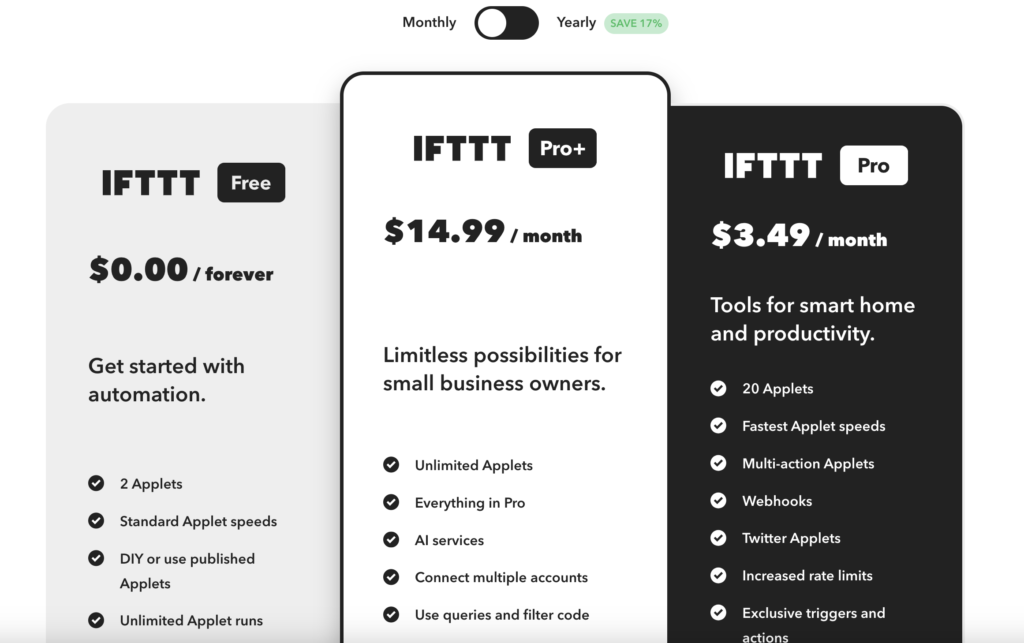
Zapier’s Task-Based Pricing
After getting acquainted with IFTTT’s pricing structure, it’s time to delve into Zapier’s task-based pricing. With Zapier, you can start for free with 100 tasks each month and up to 5 Zaps.
If you need more capabilities, their Starter plan is available at $29.99 per month offering 750 tasks monthly, which can be scaled to 1,500 tasks for $59.99 per month. For heavier usage, the Professional plan might be suitable, coming in at $73.50 per month enabling up to 2,000 tasks each month that can scale all the way up to 2 million tasks for $3,598.50 per month.
Zapier also offers a Team plan for $448.50 each month allowing up to 50,000 monthly tasks scalable to 2 million. Finally, there is a Company plan priced at $898.50 every month supporting up to 100,000 tasks a month.
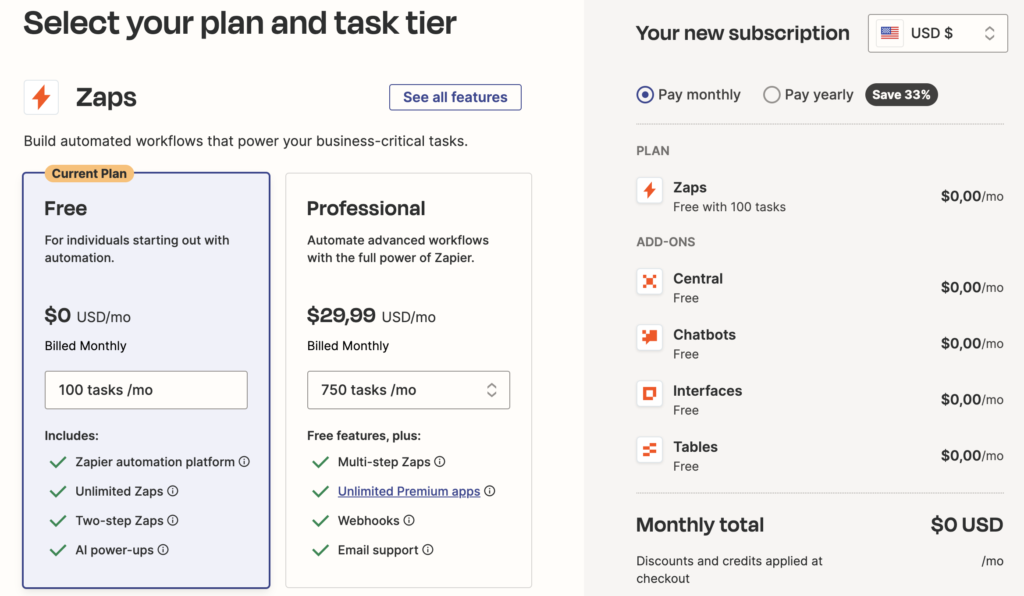
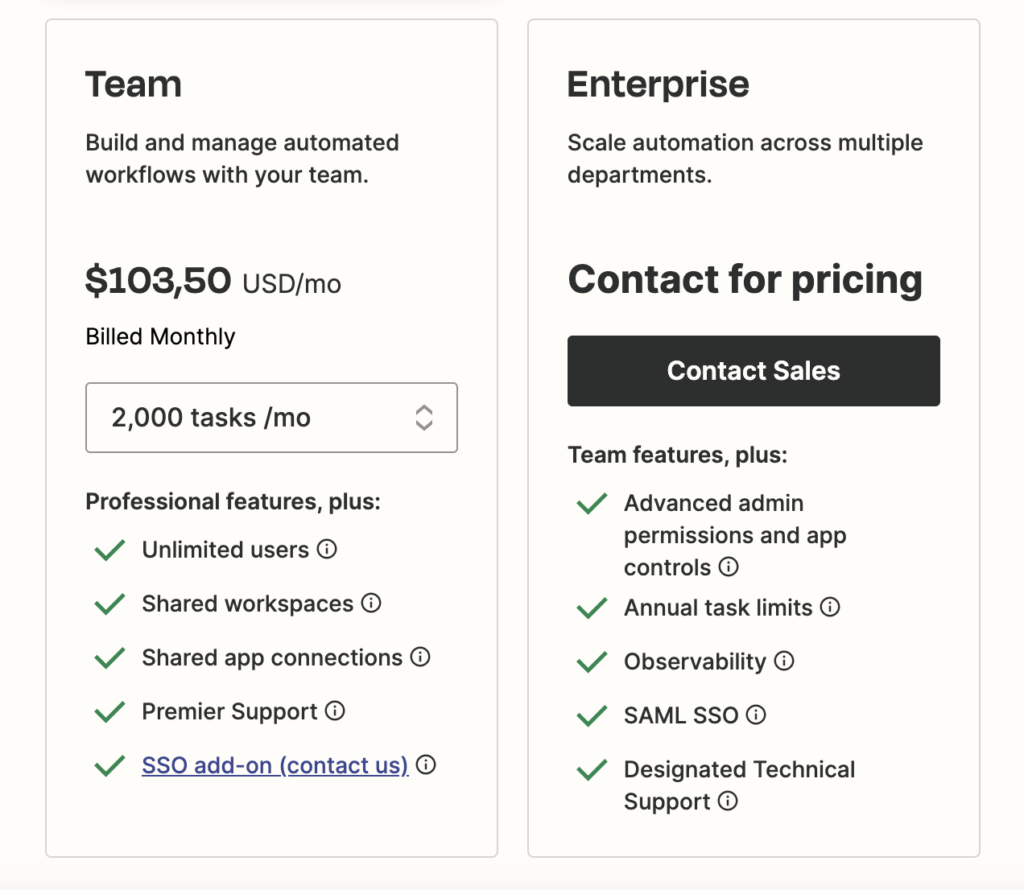
Use Cases
Explore personal automation scenarios with IFTTT to streamline your daily tasks and make the most of the internet of things, such as managing your smart home devices or automatically syncing your social media accounts.
Additionally, discover professional automation scenarios with Zapier that allow you to integrate marketing tools, carry out usability testing, and improve communication within your team.
Strike a balance between ease of use and advanced capabilities by leveraging these platforms for tailored automation solutions.
Personal Automation Scenarios with IFTTT
You can use IFTTT to:
- Automate your social media posts on platforms like Twitter, Facebook, and Instagram.
- Log your work hours automatically for easy tracking.
- Integrate with over 700 services, including IoT applications and smart home devices.
IFTTT simplifies personal automation by providing user-friendly ways to automate social media, work tasks, and IoT applications.
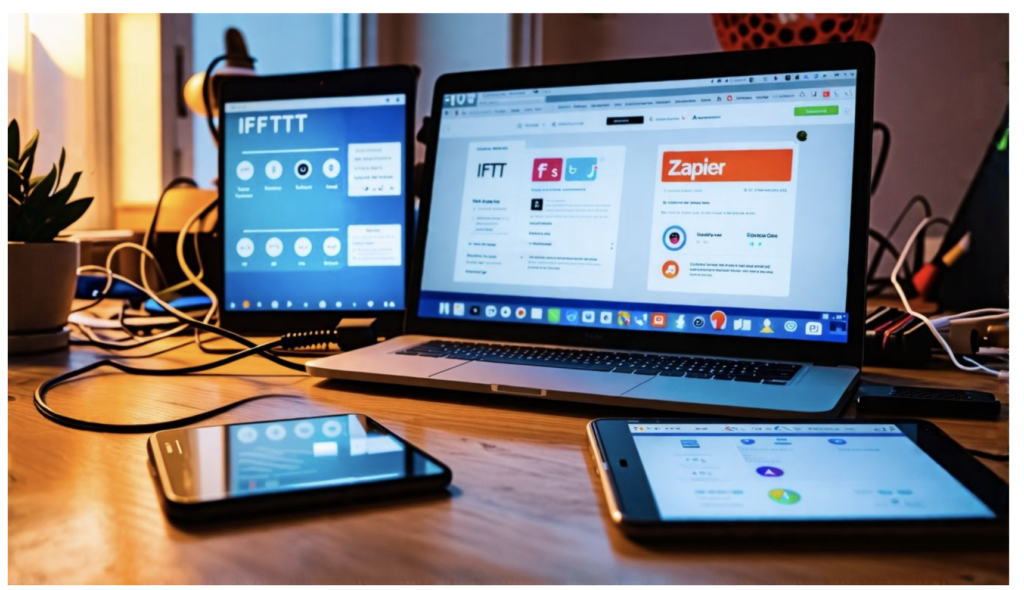
Professional Automation Scenarios with Zapier
Zapier is great for connecting business apps and project management tools.
It’s also perfect for backup services and professional/business needs.
- With over 3,000 app integrations…
- …it boasts a massive library of business apps…
- …and offers extensive app integrations, and advanced customization features.
- Zapier handles complex options, offering advanced customizations to suit your needs.
Conclusion – IFTTT vs Zapier
Which is better for your needs, IFTTT vs Zapier?
Considering your specific needs and preferences, both IFTTT and Zapier offer distinct advantages. If you prioritize simplicity and personalized home automation, IFTTT may be the right fit for you.
On the other hand, if you require robust integrations for professional use or business purposes, Zapier could better suit your requirements. Ultimately, it’s about matching the unique features of each platform with your particular goals in order to determine which automation tool aligns best with your aims in 2024.
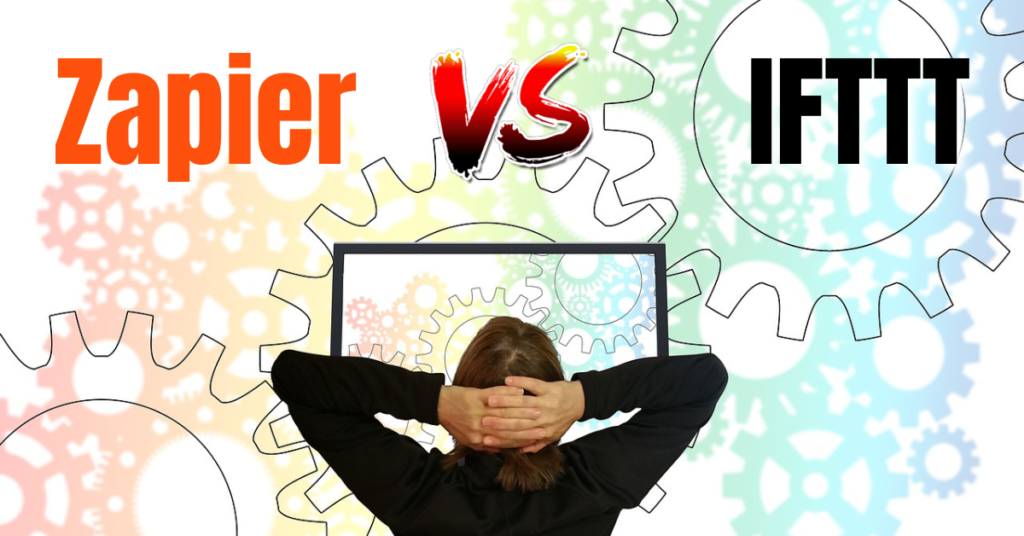
FAQs – Which is better IFTTT vs Zapier?
1. What’s the difference between IFTTT vs Zapier in 2024?
IFTTT, with its “recipes” and focus on mobile and Internet of Things (IoT), differs from Zapier which offers more complex “templates” primarily for cloud software like Azure.
2. Which automation software is better for IoT applications, IFTTT vs Zapier?
For IoT applications, IFTTT takes the lead… It’s specifically designed to connect various devices across the internet of things.
3. If my business relies heavily on cloud software such as Azure, should I choose Zapier over IFTTT?
Absolutely! With its advanced templates, Zapier shines when it comes to integrating with cloud software platforms like Azure…
4. Can both IFTTT vs Zapier be used on mobile devices in 2024?
Yes indeed! Both offer mobile compatibility… However, keep in mind that IFTTT has a stronger emphasis on mobile integration than Zapier.





